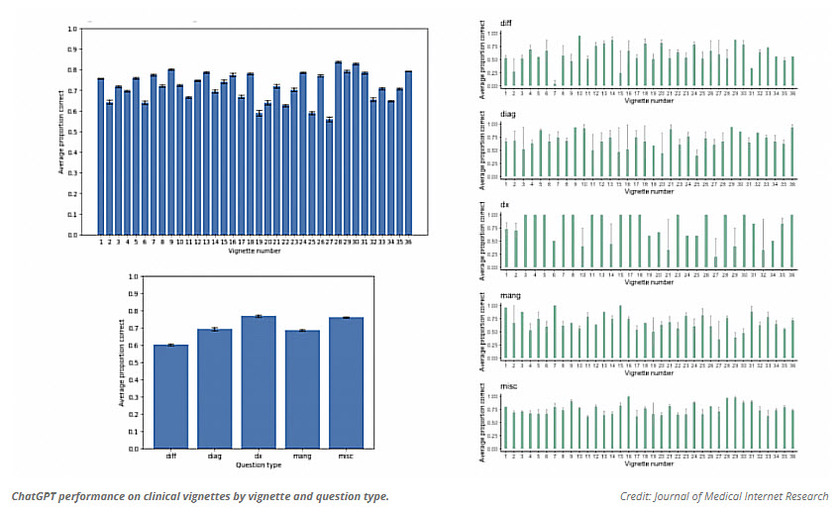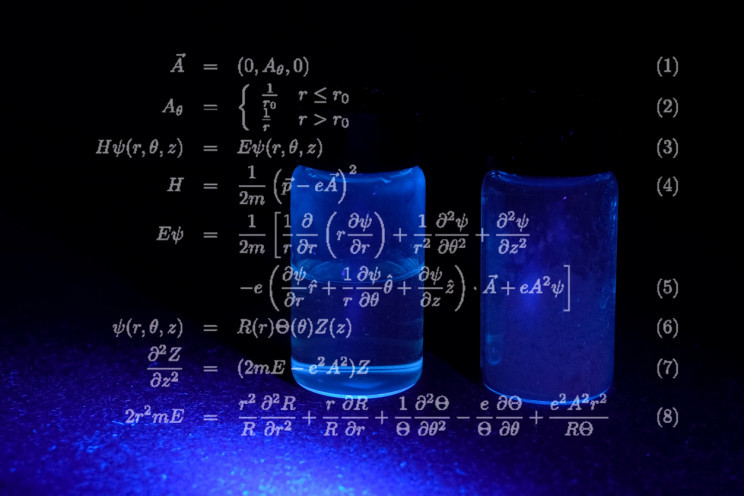In life after taking all those calculus classes did you ever wonder why? This has no real purpose, so why take it? In reality calculus runs everything from google search to modern architecture, calculus is silently operating everywhere that you do not realize. The following article is from interestingengineering.com and written by Rupendra Brahambhatt:
"Can you think of your life where nothing changed? Those moments are rare, as everything in our life is subject to transformation. The amount of food we eat every day, the number of steps we take, and even the time the Sun rises. Calculus is a branch of mathematics that allows us to study continuous change. Most people see calculus only as a bunch of equations that involve a lot of calculations, but it is actually the set of principles that we apply in our lives every day.
The application of calculus can be seen in physics, medicine, engineering, and economics. It played a key role in the development of navigation in the 17th and 18th centuries, and today it has a vital role in space travel, and in the development of various other advanced technologies. The fields and disciplines that use calculus include thermodynamics, electricity, acoustics, geography, computer vision, economics, robotics, demographics, ship design, and engineering.
Let's have a closer look at the history of calculus.
What is calculus, and what are its types?
Calculus uses mathematical operations to study and analyze rates of change and find patterns between equations. It is a significant branch of mathematics. However, before you dive deep into calculus, you need to understand the meaning behind three terms: Function, derivative and integral.
A function defines the connection between two variables (such as distance and time, temperature and volume, etc.) in an equation. A function 𝑓 consists of an input or set of inputs, an output or set of outputs, and a rule for assigning each input to exactly one output.
The derivative is defined as the rate of change of a function with respect to a variable (i.e. output value with respect to input value). An integral is a mathematical object that can be interpreted as an area or a generalization of area.
Using calculus, scientists, astronomers, physicists, mathematicians, and chemists can develop mathematical equations that allow them to chart the orbit of the planets and stars, determine the positions and path of protons and electrons, know how medicines interact with humans cells, and find answers to many other mathematical questions.
There are two main types of calculus; differential and integral. Here is an overview of these:
What is differential calculus?
The branch of calculus that aims to find the rate of change of a function with respect to the variable on which it depends is called differential calculus. It is commonly used to find the slope of a line (how steep it is) at a given point on a curve.
While finding a slope on a straight line is relatively easy, on a curve, the slope has different values at different points, as the line bends. One way of finding the slope is to mathematically cut the curve into very tiny pieces so that each piece resembles a straight line. The slope of this straight line will then be the same as the slope of the curve at that point - this is called the tangent.
For functions that act on real numbers, the derivative (d) is the slope of the tangent line at a point on a graph. The derivative is often written as dy/dx (the difference in y divided by the difference in x).
A range of points, or limit, is chosen on either side of the range or point we are trying to find. Then, the tangent is calculated over the limit. The slope approaches a particular value as the tangents approached the real slope of the curve. The particular value it approached is the actual slope.
This process of working out a slope using limits is called differentiation, or finding the derivative.
What is integral calculus?
While differential calculus is concerned primarily with the slope of a curve. In contrast, integral calculus is concerned with calculating the area underneath a graph of a function.
For example, if we are calculating the distance a car travels and know the speed of the car at different points in time, we can draw a graph of this speed, and the distance the car travels will be the area under the graph.
This is done by dividing the graph into many very small pieces, and "drawing" rectangles under each piece. The area of a rectangle is easy to calculate, so the total area of all the rectangles can then be calculated. If the rectangles are made thin enough, then the value of the total area will approach the area underneath the graph. This value of the area is called the integral of the function.
Fundamental theorem of calculus
The theorem is actually a two-part concept that connects the differentiation of a function to the integration of a function. The theorem demonstrates that differentiation and integration are inverse processes.
The first part of the theorem establishes the procedure for computing a definite integral (an integral where you are given the upper and lower limits of integration).
It says that if we first integrate f and then differentiate the result, we get back to the original function f. The indefinite integral (F) of a function (f) can be derived from the integration of function f. Therefore, it demonstrates that indefinite integrals exist for continuous functions.
The second part of the fundamental theorem is a way to calculate a definite integral in terms of indefinite integrals. (An indefinite integral, also called an anti-derivative, is an integral without upper and lower limits).
For a function f that is continuous over an interval, the theorem allows us to create a new function, F(x), by integrating f over that interval. When we do this, F(x) is the anti-derivative of f(x), and f(x) is the derivative of F(x). Further, F(x) is the accumulation of the area under the curve f over that interval.
The second fundamental theorem of calculus establishes a relationship between a function and its anti-derivative. It allows us to find the derivative of a curve and evaluate it at certain values of the variable at times when using an anti-derivative is otherwise difficult.
Who invented calculus?
Greek mathematicians took the very first steps towards the development of calculus. In the late fifth century, the astronomer Eudoxus of Cnidus proposed a concept called the method of exhaustion. He claimed that by using this method, the area of any shape could be calculated by drawing a sequence of polygons inside the shape, as the area covered by all the polygons would be almost similar to the total area bounded by the shape.
Later, the Greek mathematician Archimedes used the method of exhaustion to calculate the circumference of a circle and used his findings to define the mathematical constant π (Pi). Interestingly, he didn’t stop there and employed the same method to figure out the volume of a sphere, the area of an ellipse, the area of a spiral rotation, the volume of a cylinder, and various other geometrical values.
Between the third and fifth centuries AD, Chinese mathematicians Liu Hui and Zu Gengzhi also came up with their own version of the method of exhaustion and used it to calculate the area of the circle and volume of a sphere, respectively.
Some studies point out that ancient Indian scholars knew about calculus long before it started being practiced by modern mathematicians. For instance, historical evidence suggests that in the 15th century, two Indian astronomers and mathematicians, Madhava of Sangamagrāma and Nilkantha Somayaji, developed theories encompassing different elements of present-day calculus.
Another Indian astronomer, Bhaskara II, or Bhaskaracharya, is believed to have mentioned concepts and principles similar to differential and integral calculus in his book Siddhānta Shiromani, originally written in 1150 AD. Interestingly, the book also discusses algebra, trigonometry, and various other mathematical concepts in detail.
In the modern era, German astronomer Johannes Kepler kicked off the further development of calculus. In his work titled Stereometrica Doliorum, he suggested a method to calculate the area of an ellipse.
In the years that followed, numerous other scientists and mathematicians, such as Isaac Barrow, Evangelista Torricelli, Rene Descartes, Pierre Fermat, etc., made notable contributions in the field of calculus. However, the final elucidation of calculus is attributed to both Sir Isaac Newton and Gottfried Leibniz, who independently developed its foundations and explained its underlying principles in depth.
Although they were both instrumental in developing calculus, they thought of the fundamental concepts in very different ways.
Newton viewed calculus as the scientific description of the generation of motion and magnitudes, while Leibniz focused on tangents and the notion of calculus as an explanation of the change.
Both thought in terms of graphs rather than functions. For Newton, the calculus was geometrical while Leibniz took it towards analysis, and also developed a notational system for calculus.
Applications of calculus in different fields
Calculus has made our lives comfortable and productive in many ways. Here are some applications that prove the same:
Atmospheric scientists can predict weather and climate-related changes more accurately by using factors like wind speed, moisture level, temperature, pressure, etc. Although sensors serve as essential tools for predicting the weather, the basics of weather forecasting lie in differential equations that take into account the slightest changes in the above-mentioned weather-related variables and give out values that reflect future weather conditions.
Since building construction requires an in-depth understanding of weight, area, height, material density, and various other variables. Civil engineers and architects employ differential and integral calculus to deal with the complex mathematics associated with the construction of buildings, bridges, and various other types of structures.
For the proper and smooth operation of robots that primarily need to be moving most of the time, the variables linked to their functions, such as velocity, distance, acceleration, etc., must be coordinated well. Such coordination is achieved through computer programs and built-in mechanisms that are governed by calculus-based equations.
Biologists use calculus methods to accurately predict the rate of growth of bacteria and other microbes. It is also used in patient diagnosis for calculating cardiac output, blood pressure, cell and tumor growth. Epidemiologists use calculus to study the spread of infectious diseases.
Other calculus applications involve its use by experts in the field of bioinformatics to study the effects of medicines on human cells over a period of time. The side effects of drugs are also analyzed through integral calculus. Moreover, calculus is also helpful for accurately predicting population, population density, annual rainfall, and numerous other parameters.
At the time of its elucidation, calculus was believed to be not more than an ordinary mathematical concept that explained change with respect to time. However, over the years, the concept evolved and gradually became an essential tool for finding answers related to any number of important changes and developments that take place."
So now you know all those calculus classes were worth it! In fact you may be using calculus at work and do not even realize it. Math is fun once you understand what it is used for in real life.
Reference: https://interestingengineering.com/calculus
I have lost a lot of faith with the Medical Community and the Governments over the last several years, but there are a few good things that can raise above the corruption and the pushing of drugs a new approach to heal people. The following is from www.gaia.com and written by Hunter Parsons that does not involve any drug or pushing an ineffective so called vaccine that the drug company is not held accountable in any way but they use sound! The use of sound can regrow bone tissue! Here is the story:
"The future of regenerative medicine could be found within sound healing by regrowing bone cells with sound waves.
The use of sound as a healing modality has an ancient tradition all over the world. The ancient Greeks used sound to cure mental disorders; Australian Aborigines reportedly use the didgeridoo to heal; and Tibetan or Himalayan singing bowls were, and still are, used for spiritual healing ceremonies.
Recently, a study showed an hour-long sound bowl meditation reduced anger, fatigue, anxiety, and ...
Not a fan of a Defense Agency studying Anti-Gravity and other Exotic Tech, but if the commercial world and make this technology cheap that will change our world yet again. The following is about three minute read and from www.gaia.com. The below was written by Hunter Parsons:
"Wormholes, invisibility cloaks, and anti-gravity — it’s not science fiction, it’s just some of the exotic things the U.S. government has been researching.
A massive document dump by the Defense Intelligence Agency shows some of the wild research projects the United States government was, at least, funding through the Advanced Aerospace Threat Identification Program known as AATIP.
And another lesser-known entity called the Advanced Aerospace Weapons System Application Program or AAWSAP
The Defense Intelligence Agency has recently released a large number of documents to different news outlets and individuals who have filed Freedom of Information Act requests.
Of particular interest are some 1,600 pages released to Vice News, which ...
As our technology gets better we are discovering more about the history of mankind and pushing the timeline back further and further. The following article is from www.gaia.com and written by Michael Chary that discusses this new find that changes the historical timeline:
"Over the past decade, there have been a number of archeological revelations pushing back the timeline of human evolution and our ancient ancestors’ various diasporas. Initially, these discoveries elicit some resistance as archeologists bemoan the daunting prospect of rewriting the history books, though once enough evidence is presented to established institutions, a new chronology becomes accepted.
But this really only pertains to the era of human development that predates civilization — the epochs of our past in which we were merely hunter-gatherers and nomads roaming the savannahs. Try challenging the consensus timeline of human civilization and it’s likely you’ll be met with derision and rigidity.
Conversely, someone of an alternative...
Not sure if you have heard of a show on YouTube called "The Why Files". If not you should check it out it is interesting and has some humor with it on different subjects. Last weeks was on a different theory how the Universe works and how main stream Science is attempting to shut it down like is always seems to do if it goes aguest some special interest. Today it is akin to what happened to those who questioned the Earth was the Center of the Universe that main stream so called Science all believed during the Renaissance period, They called any theory that the Earth was not the Center of the Universe misinformation. Does this sound familiar today? People laughed and mocked people like Leonardo da Vinci, Nicolaus Copernicus, Georg Purbach as crack-pots, conspiracy theorists, nut-jobs and they were suppressed and even imprisoned for their radical thoughts and observations. Again it sounds like today in so many ways. In any event this is a good one to ponder and see even if a bad idea ...
Seemingly chaotic systems like the weather and the financial markets are governed by the laws of chaos theory.
We all have heard about chaos theory, but if you have not or have forgotten what chaos theory is well here you go from interestingengineering.com:
"Chaos theory deals with dynamic systems, which are highly sensitive to initial conditions, making it almost impossible to track the resulting unpredictable behavior. Chaos theory seeks to find patterns in systems that appear random, such as weather, fluid turbulence, and the stock market.
Since the smallest of changes can lead to vastly different outcomes, the long-term behavior of chaotic systems is difficult to predict despite their inherently deterministic nature.
As Edward Lorenz, who first proposed what became commonly known as the Butterfly Effect, eloquently said, "Chaos: When the present determines the future, but the approximate present does not approximately determine the future.""
You may have heard the term about chaos theory as a butterfly flaps its wings in Brazil,...
I for one have lost trust in Medical Doctors due to COVID and reflection that they seem to push pills for everything and untested so called vaccines that is using a unproven technology because the Government and the Medical Boards of the State told them to. There are a very few exceptions. Thus they do not address the key problem just prescribe more and more pills to keep you alive an sick longer for them and Big Phama to profit from you. Will AI do any better? Well that depends on what was used for the training of AI. If it also pushes pills and vaccines without question then you have the same problems noted above. However, if the AI Training includes all possible forms of treatment and they zero in on the right issues for the true problem then there is possibilities they would be way better than most of the current Medical Doctors today.
The following is from an article from interestingengineering.com and written by Paul Ratner:
"A new study looks at how accurately AI can diagnose patients. We interview the researcher, who weighs in on AI's role ...

























